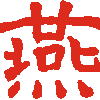-
Posts
2,121 -
Joined
-
Last visited
-
Days Won
8

Carlo Giuseppe Tacchini replied to Fogarty's topic in Nihonto

Carlo Giuseppe Tacchini replied to Surfson's topic in Auctions and Online Sales or Sellers

Carlo Giuseppe Tacchini replied to Fogarty's topic in Nihonto

Carlo Giuseppe Tacchini replied to Mark Green's topic in General Nihonto Related Discussion

Carlo Giuseppe Tacchini replied to Bugyotsuji's topic in General Nihonto Related Discussion

Carlo Giuseppe Tacchini replied to ScottF808's topic in Nihonto

Carlo Giuseppe Tacchini replied to ScottF808's topic in Nihonto

Carlo Giuseppe Tacchini replied to Muka's topic in Translation Assistance

Carlo Giuseppe Tacchini replied to nsealrob's topic in Translation Assistance

Carlo Giuseppe Tacchini replied to nsealrob's topic in Translation Assistance

